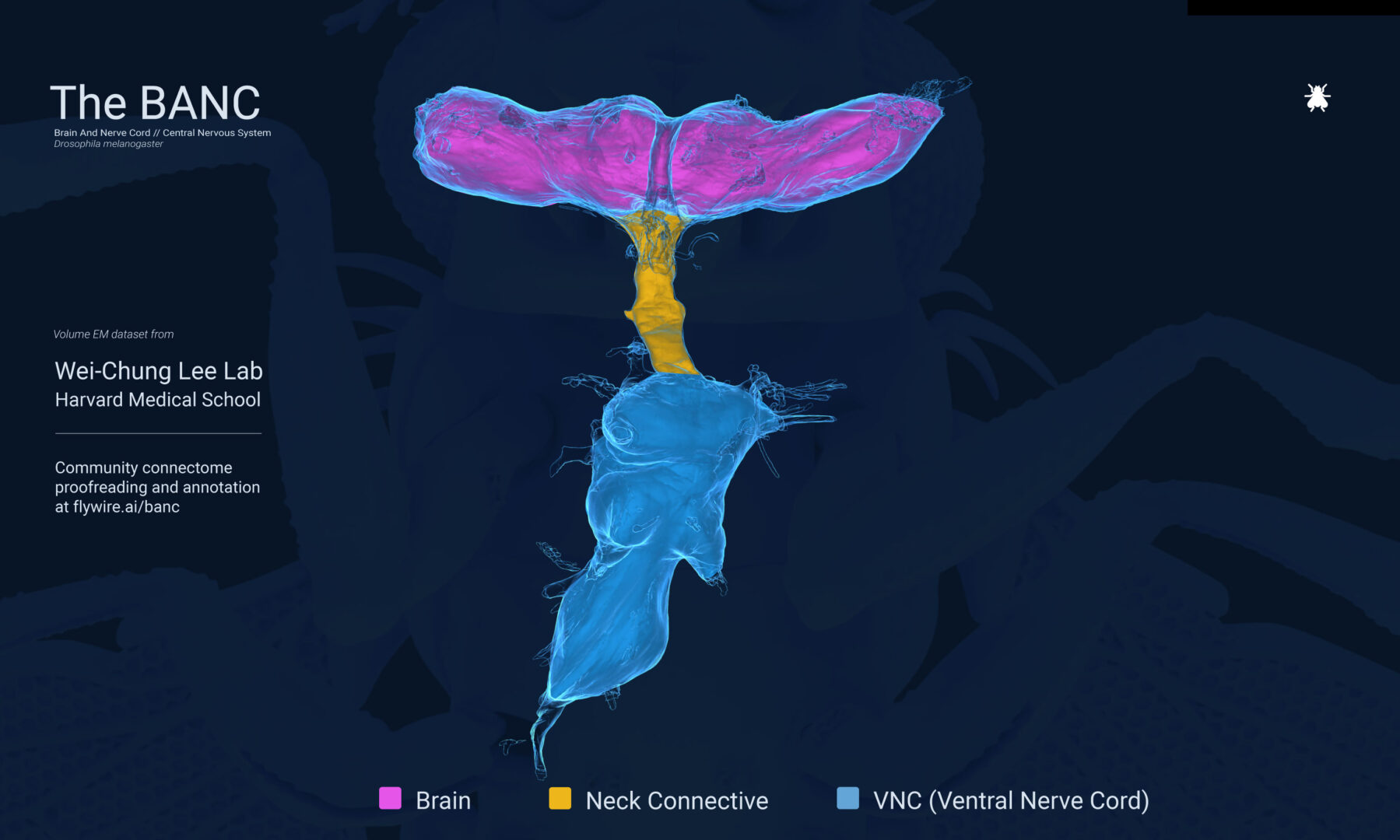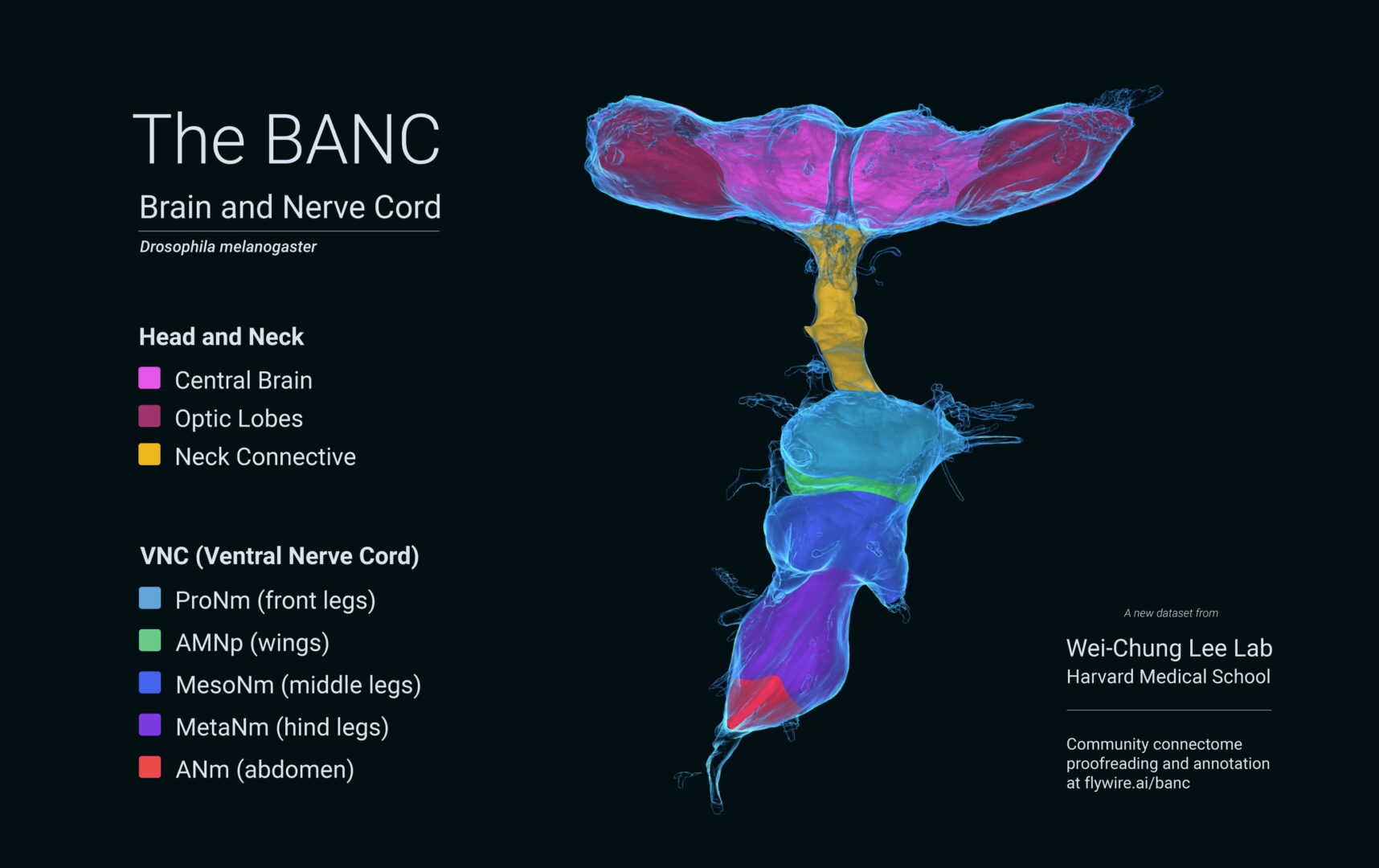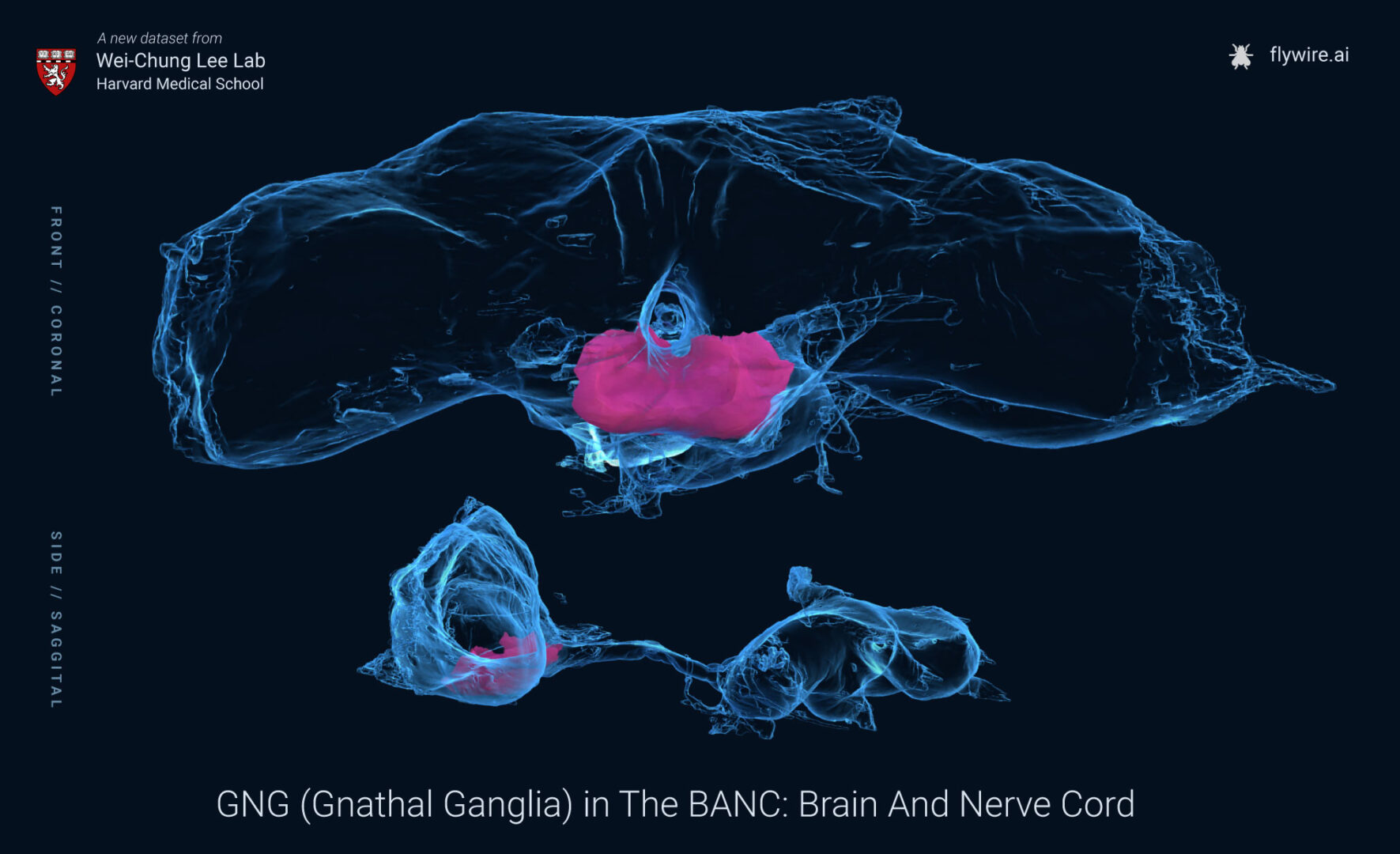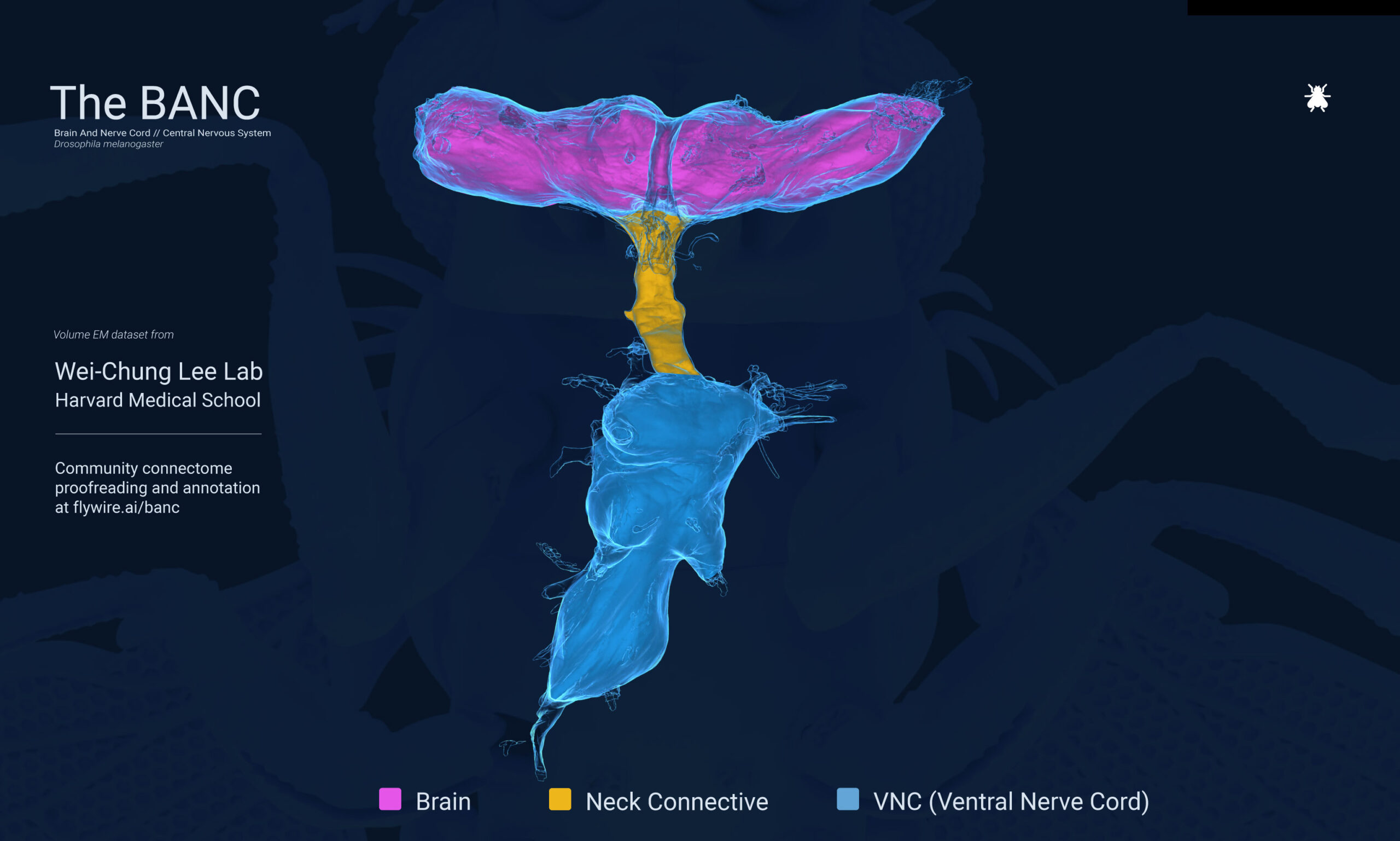Hello, intrepid explorers of the microscopic universe! FlyWire’s recent 4 year adventure into connectomics mapped the entire brain of a fruit fly (Drosophila melanogaster) at synapse resolution. We’re thrilled to announce the next endeavor: The BANC (Brain and Nerve Cord), a dataset generated by Jasper Phelps and Minsu Kim for Wei-Chung Lee’s Lab at Harvard Medical School.
This ambitious project isn’t just another step; it’s a first flight for the field of neuroscience. We’re mapping the entire central nervous system of an organism at the nanoscale. That’s the kind of detail that would make Cajal proud. The BANC project is poised to reveal secrets of how brains process information; how organisms make decisions and exhibit behavior.
The complexity and scale of the BANC project means that we’re rallying a veritable army of curious minds, from seasoned researchers to citizen scientists, to help with both proofreading and annotation. You can request access to BANC at https://flywire.ai/banc.
Let’s take a closer look at the BANC.

If you previously helped proofread in FlyWire, you will be familiar with the pink brain region shown above. You may even recall occasionally seeing neurons jet out of the brain. These Ascending (AN) and Descending (DN) neurons allow the brain to communicate with the body. They reach through the neck connective and either relay signals from the brain to body (DN) or from body to brain (AN). After passing through the neck connective, they reach the VNC. Here is a selection of ANs and DNs in the BANC (link requires production access).

The VNC can be further subdivided into five neuromeres (similar to neuropil). Each of six (three pairs each left and right) spherical neuromeres controls one leg. The AMNp controls wings and the ANm extends to the body. These regions are not yet available in BANC; however, here is a link to the VNC divisions in FANC (Female Adult Nerve Cord), a subset of the CNS. For more information, see A Systematic Nomenclature for the Drosophila Ventral Nerve Cord from Court et. al.
Jump Into the GNG
Citizen Scientist proofreading begins in the GNG (Gnathal Ganglia). This neuropil toward the base of the brain sends and receives substantial input to and from the body. The GNG is a sort of multitasking maestro. It’s crucial for integrating sensory information with motor functions. For example, it helps the fly respond to what it tastes and smells in a way that’s appropriate—like, “Mmm, this ripe banana is delicious, let’s eat more,” or “Yikes, a hazardous substance, back away!”

GNG reference links:
- Common GNG Cells
- GNG Neuropil viewer
- Stats for neurons with: output / input in GNG
Join the Community

To join BANC, sign up using this form.
The BANC community operates out of FlyWire’s Slack forum. After you are admitted to BANC you will receive an invite to join the forum.
Once you are in Slack, be sure to join the #banc and #banc-citsci channels!
Spelunker (the platform we’re proofreading on) does not yet have “Get Cell” or Lightbulb Menu capabilities. Instead, we are currently using a bot that operates through Slack to get cell info and annotate cells.
The bot is activated by private messaging @banc-bot in Slack. The Banc-Bot Guide gives details on how to interact with the bot.
This tutorial video also walks you through interacting with the Banc-Bot.
For Science!
The proofreading and annotation of the BANC will likely span several years, requiring the dedication and effort of hundreds of people. It’s a marathon, not a sprint, and every observation, every correction, and every annotation you contribute will help piece together the colossal puzzle of the BANC.
Thank you! Send any questions to flywire at princeton dot edu.
Resource Papers:
Wiring diagram of an adult brain (Dorkenwald et. al. 2023)
A Systematic Nomenclature for the Drosophila Ventral Nerve Cord (Court et. al. 2020)
The BANC was generated by Jasper Phelps and Minsu Kim of Wei-Chung Lee’s Lab at Harvard Medical School. Thanks to Jasper Phelps and Wei-Chung Lee for advising this post.
